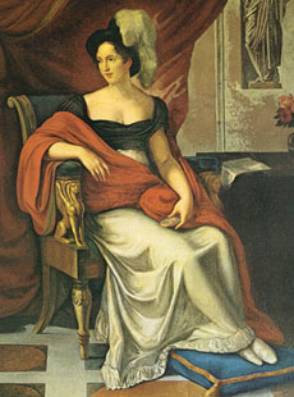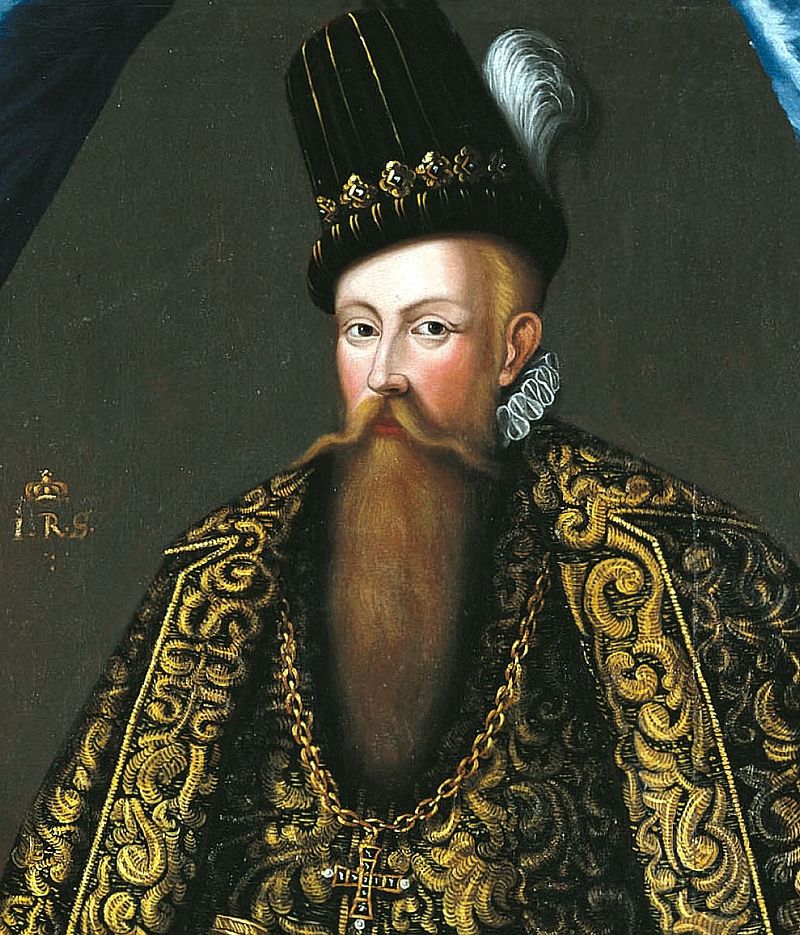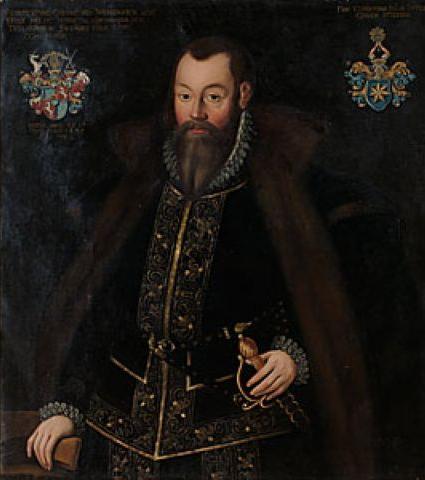by Susan Flantzer
© Unofficial Royalty 2021
The Kingdom of the Two Sicilies was located in today’s southern Italy. It included the island of Sicily and all of the Italian peninsula south of the Papal States. Ferdinando I, the first King of the Two Sicilies, had previously reigned over two kingdoms, as Ferdinando IV of the Kingdom of Naples and Ferdinando III of the Kingdom of Sicily. He had been deposed twice from the throne of Naples: once by the revolutionary Parthenopean Republic for six months in 1799 and again by Napoleon in 1805, before being restored in 1816 after the defeat of Napoleon. After the 1816 restoration, the two kingdoms were united into the Kingdom of the Two Sicilies.
Vittorio Emanuele II, King of Sardinia became a driving force behind the Italian unification movement along with Giuseppe Garibaldi, a general and nationalist, and Giuseppe Mazzini, a politician and journalist. Garibaldi conquered Naples and Sicily, the territories of the Kingdom of Two Sicilies. Francesco II, King of the Two Sicilies was deposed, the Kingdom of the Two Sicilies ceased to exist, and its territory was incorporated into the Kingdom of Sardinia. Eventually, the Sardinian troops occupied the central territories of the Italian peninsula, except Rome and part of Papal States. With all the newly acquired land, Vittorio Emanuele II was proclaimed the first King of the new, united Kingdom of Italy in 1861.
********************

Ferdinando I, King of the Two Sicilies
Ferdinando I reigned as King of Naples and Sicily from 1759 – 1816, and then as King of the Two Sicilies from 1816 – 1825. Born at the Royal Palace in Naples, now Italy, on January 12, 1751, Ferdinando was the third of the six sons and the ninth of thirteen children of Carlos IV, King of Naples and Sicily, later Carlos III, King of Spain, and Maria Amalia of Saxony. Ferdinando’s paternal grandparents were Felipe V, King of Spain and his second wife Elisabeth Farnese of Parma. Ferdinando’s paternal grandfather Felipe V was born Philippe of France, Duke of Anjou, the son of Louis, Le Grand Dauphin, the heir apparent to the throne of France, and the grandson of Louis XIV, King of France. Ferdinando’s maternal grandparents were Odoardo Farnese, Hereditary Prince of Parma and Dorothea Sophie of Neuburg.
Ferdinando I had twelve siblings:
- Princess Maria Isabel of Naples and Sicily (1740 – 1742), died in early childhood
- Princess Maria Josefa of Naples and Sicily (born and died 1742), died in infancy
- Princess Maria Isabel of Naples and Sicily (1743 – 1749), died in childhood.
- Infanta Maria Josefa of Spain (1744 – 1801), unmarried
- Infanta Maria Luisa of Spain (1745 – 1792), married Pietro Leopoldo I, Grand Duke of Tuscany (also Leopold II, Holy Roman Emperor), had sixteen children
- Prince Felipe of Spain, Duke of Calabria (1747 – 1777), excluded from succession to the throne due to his mental disability, died from smallpox
- Carlos IV, King of Spain (1748 – 1819), married Princess Maria Luisa of Parma, had fourteen children
- Princess Maria Teresa of Naples and Sicily (1749 – 1750), died in infancy
- Infante Gabriel of Spain (1752 – 1788), married Mariana Vitória of Portugal, had three children
- Princess Maria Ana of Naples and Sicily (1754 – 1755), died in infancy
- Infante Antonio Pascual of Spain (1755 – 1817), married his niece Infanta Maria Amalia of Spain who died in childbirth with her son
- Infante Francisco Javier of Spain (1757 – 1771), died in his teens
In 1759, upon the death of his childless half-brother King Ferdinand VI of Spain, King Carlos IV of Naples and Sicily succeeded him as King Carlos III of Spain. Because of treaties, Carlos could not be the sovereign of all three kingdoms. His eldest son Felipe was excluded from the succession because of intellectual disability and his second son Carlos was the heir apparent to the Spanish throne. That left the third son Ferdinando to become King of Naples and King of Sicily. Ferdinando was only eight years old when he became King of Naples and Sicily and a regency council ruled until his sixteenth birthday. Ferdinando resisted his studies and his court commitments and this was encouraged by Bernardo Tanucci, the president of the regency council, who wanted to control the government.

Maria Carolina of Austria, Ferdinando’s first wife; Credit – Wikipedia
On October 1767, a marriage was arranged as part of an alliance between Austria and Spain between Ferdinando and Maria Josepha of Austria, the daughter of Holy Empress Maria Theresa, who was in her own right Archduchess of Austria, Queen of Hungary, Queen of Croatia, and Queen of Bohemia, and Francis, Holy Roman Emperor, Grand Duke of Tuscany, and Duke of Lorraine. However, Maria Josepha died during a smallpox epidemic. Ferdinando’s father Carlos III of Spain was anxious to save the Austro-Spanish alliance, and so he requested one of Maria Josepha’s sisters as a replacement bride. Empress Maria Theresa, who wielded the real power, offered a choice of two of her daughters. Fifteen-year-old Archduchess Maria Carolina of Austria was chosen as Ferdinando’s bride. The couple was married by proxy in Vienna, Austria on April 7, 1768. On May 12, 1768, Ferdinando and Maria Carolina married in person at the Palace of Caserta in Caserta, near Naples. As part of the marriage contract, Maria Carolina was to have a place on the council of state after the birth of her first son.
During the early months of their marriage, serious differences arose between the newlyweds which would worsen over the years. In contrast to Maria Carolina, who had been carefully prepared for her role as a future queen, Ferdinando had never received a comprehensive education and spent his time hunting, playing pranks, and eating excessively.

Ferdinando, Maria Carolina, and their children Maria Theresa, Maria Luisa, Maria Amelia, Francesco, Maria Cristina, and Gennaro, 1783; Credit – Wikipedia
Despite her dislike for her husband, Maria Carolina fulfilled her most important duty – to continue the dynasty. Ferdinando and Maria Carolina of Austria had seventeen children but only seven survived childhood. Seven of their children died from smallpox. However, four of their five surviving daughters married sovereigns.
- Maria Teresa of Naples and Sicily (1772 – 1807), married her first cousin Franz II, Holy Roman Emperor (later Franz I, Emperor of Austria), had twelve children
- Maria Luisa of Naples and Sicily (1773 – 1802), married her first cousin Ferdinand III, Grand Duke of Tuscany, had five children
- Carlo of Naples and Sicily (1775 – 1778), died in early childhood from smallpox.
- Maria Anna of Naples and Sicily (1775 – 1780), died in childhood from smallpox.
- Francesco I, King of the Two Sicilies (1777 – 1830), married (1) Maria Clementina of Austria, had two children (2) Maria Isabella of Spain, had twelve children
- Maria Cristina of Naples and Sicily (1779 – 1849), married Carlo Felice, King of Sardinia, no children
- Gennaro of Naples and Sicily (1780 – 1789), died in childhood from smallpox
- Giuseppe of Naples and Sicily (1781 – 1783), died in early childhood from smallpox.
- Maria Amelia of Naples and Sicily (1782 – 1866), married Louis Philippe d’Orléans, Duke of Orléans, later King of the French, had ten children
- Maria Carolina of Naples and Sicily (born and died 1783)
- Maria Antonia of Naples and Sicily (1784 – 1806), married Infante Ferdinand of Spain, Prince of Asturias, later King Ferdinand VII of Spain, no children, died from tuberculosis
- Maria Clotilde of Naples and Sicily (1786 – 1792), died in childhood from smallpox
- Maria Enricheta of Naples and Sicily (1787- 1792), died in childhood from smallpox
- Carlo Gennaro of Naples and Sicily (1788 – 1789), died in infancy from smallpox
- Leopoldo of Naples and Sicily (1790 – 1851), married his niece Clementina of Austria, had two children
- Alberto of Naples and Sicily (1792 – 1798), died in childhood
- Maria Isabella of Naples and Sicily (1793 – 1801), died in childhood
In 1775, after her first son was born, Maria Carolina took her place on the council of state. Bernardo Tanucci, the former president of the regency council, was still on the council of state and attempted to thwart her political influence and found himself dismissed in 1777. From then on, Maria Carolina was the de facto ruler of the Kingdoms of Naples and Sicily.
Ferdinando I was deposed twice from his thrones: once by the revolutionary Parthenopean Republic for six months in 1799 and again by Napoleon in 1805. In February 1806, Ferdinando, Maria Carolina, and their family was forced to flee to the island of Sicily, which was still in their control, where they lived in the Royal Palace of Palermo under British protection. However, the government of Sicily was a feudal type and the British insisted on a government more similar to the British one. In 1813, Ferdinando essentially but not officially abdicated and his eldest surviving son Francesco was appointed regent. At the insistence of the British, who were becoming more and more adverse to Maria Carolina, she was forced to leave Sicily. She returned to her home in Austria where she died from a stroke, aged 62, on September 8, 1814.

Ferdinando’s morganatic second wife Lucia Migliaccio, Duchess of Florida; Credit – Wikipedia
On November 27, 1814, in Palermo, Sicily, less than three months after the death of his first wife, Ferdinando I, King of the Two Sicilies married Lucia Migliaccio, Duchess of Floridia. She was the daughter of Vincenzo Migliaccio, 8th Duke of Floridia and Dorotea Borgia dei Marchesi del Casale, and had inherited her father’s dukedom. She had previously been married to Benedetto Grifeo, 8th Prince of Partanna, who predeceased her, and they had five children. Because Ferdinando and Lucia’s marriage was morganatic, Lucia was not Queen.
In 1815, the Congress of Vienna restored Ferdinando’s rights to the thrones of Naples and Sicily and he returned to Naples on June 17, 1815. In 1816, after Ferdinando abolished the constitution of the Kingdom of Sicily, the two kingdoms, Naples and Sicily, were united into the Kingdom of the Two Sicilies. For the next four years, Ferdinand reigned as an absolute monarch and there were no constitutional reforms.

Entrance to the burial vault at the Basilica of Santa Chiara in Naples; Credit – Credit – Di Giuseppe Guida – Flickr: Basilica di Santa Chiara., CC BY 2.0, https://commons.wikimedia.org/w/index.php?curid=20267754
In 1820, a revolt broke out in Sicily and riots occurred in Naples. Ferdinando was forced to sign a constitution and appoint his son Francesco as regent of Sicily. This only lasted until March 1821, when Austrian troops friendly to Ferdinando occupied Naples. Ferdinando was re-established as an absolute monarch and the constitution was withdrawn. Ferdinando I died from a stroke in Naples on January 4, 1825, at the age of 73. He was buried at the Basilica of Santa Chiara in Naples.
This article is the intellectual property of Unofficial Royalty and is NOT TO BE COPIED, EDITED, OR POSTED IN ANY FORM ON ANOTHER WEBSITE under any circumstances. It is permissible to use a link that directs to Unofficial Royalty.
Kingdom of the Two Sicilies Resources at Unofficial Royalty
Works Cited
- De.wikipedia.org. 2021. Ferdinand I. (Sizilien) – Wikipedia. [online] Available at: <https://de.wikipedia.org/wiki/Ferdinand_I._(Sizilien)> [Accessed 25 July 2021].
- De.wikipedia.org. 2021. Maria Karolina von Österreich – Wikipedia. [online] Available at: <https://de.wikipedia.org/wiki/Maria_Karolina_von_%C3%96sterreich> [Accessed 25 July 2021].
- En.wikipedia.org. 2021. Ferdinand I of the Two Sicilies – Wikipedia. [online] Available at: <https://en.wikipedia.org/wiki/Ferdinand_I_of_the_Two_Sicilies> [Accessed 25 July 2021].
- En.wikipedia.org. 2021. Lucia Migliaccio – Wikipedia. [online] Available at: <https://en.wikipedia.org/wiki/Lucia_Migliaccio> [Accessed 25 July 2021].
- En.wikipedia.org. 2021. Maria Carolina of Austria – Wikipedia. [online] Available at: <https://en.wikipedia.org/wiki/Maria_Carolina_of_Austria> [Accessed 25 July 2021].
- It.wikipedia.org. 2021. Ferdinando I delle Due Sicilie – Wikipedia. [online] Available at: <https://it.wikipedia.org/wiki/Ferdinando_I_delle_Due_Sicilie> [Accessed 25 July 2021].




































